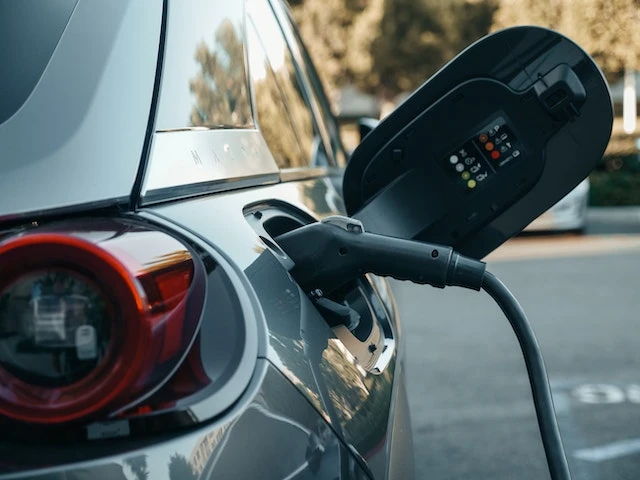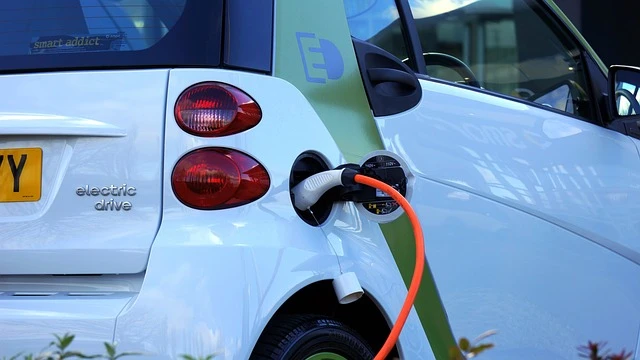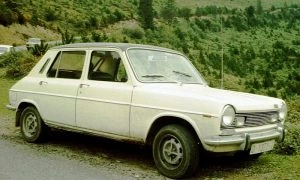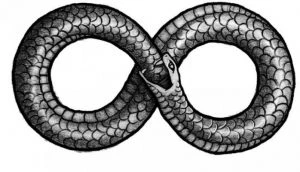Home
Extending The Life Of EV Batteries

One of the big questions that a lot of people have about making the shift from ICE (internal combustion engine) vehicles to EVs of any sort is the issue of battery life. In this context, battery life doesn’t refer to how many kilometres the batteries will take you (this is technically known as battery range) but the actual lifespan of the battery unit itself. If you’ve had any experience with any kind of rechargeable battery – which most of us have had – then you’ll know that even though you can recharge a battery a certain number of times, you can’t do it forever and eventually the battery will die, never to be recharged again.
Having said that, the lifespan of EV batteries is pretty good. In fact, the manufacturers claim that batteries can last for about 10–12 years, which is longer than the average lifespan of a whole car in some countries (although those who like second-hand cars or who are into classic cars may raise an eyebrow at this statistic). They’ve also got warranties to ensure that they last for a certain amount of time.
However, people researching rechargeable batteries don’t tend to measure the lifespan of batteries in terms of time (partly because no scientist in a rapidly developing field wants to spend 10 years running an experiment). Instead, they measure the lifespan of a rechargeable battery in charge–discharge cycles. To understand why they do this, we need to understand a bit about the science of a rechargeable battery. Don’t panic – I won’t get into too much detail, partly because I don’t have a PhD in it and can’t wrap my head fully around some of the minute details.
In any battery, an electrical current is generated when ions (particle with an electrical charge) move from the negatively charged anode through an electrolyte to the positively charged cathode. This keeps going until everything balances out and the electrochemical reaction stops. You can do this yourself with a copper coin (if you can find one these days), a zinc-coated nail and a lemon. Attach a wire to the coin and the nail, maybe connecting fairy lights in the middle, stick them in a lemon and watch the lights glow. However, in a rechargeable battery, this processed can be reversed, shuttling those ions back to the anode again.
In a rechargeable battery, every time the reaction comes to an end, i.e., complete discharge, that’s considered to be a full cycle. In the lab, to test a battery’s lifespan, researchers charge and drain and charge and drain and… until the material in the anode and/or cathode starts to deteriorate, which all things do over time. They also measure capacity decay. Over time, any rechargeable battery will lose the amount of charge it can store. Again, this is related to the number of charge–discharge cycles.

So what does that mean for EV batteries? Although the manufacturers measure lifespan in years, this figure is based the ideal battery user. If you charge your battery the right way and use it in the right way, then you’ll get the maximum lifespan from your EV’s battery pack. However, if you don’t, you’ll shorten the lifespan of the battery.
You can imagine the number of charge–discharge cycles in a battery as kind of like lives in a computer game. You’ve got a lot of them, but every time, you get those hit points down to zero and have to “respawn”, you’ve used up another life. However, unlike a computer game character’s life, hitting either extreme (full charge as well as full discharge) will shorten the lifespan because it puts stress on the battery – kind of like keeping a bow fully strung and at full draw most of the time, which, as any archer will tell you, isn’t good for the bow.
This means that ideally, you should avoid hitting these extremes. This means that exhausting your battery’s charge completely is a bad idea. However, so is topping it up to 100% all the time.
At this point, those of you who are familiar with rechargeable NiCad batteries will be scratching your heads because you’ve heard of “battery memory”. NiCad rechargeables (these are the sort that you buy to put in things that come with the label Batteries Not Included) do have a “memory”, meaning that if you are in the habit of recharging the batteries when they hit 10% charge, they’ll start acting as though 10% is the new zero. However, lithium ion batteries don’t have a battery memory effect, meaning that you won’t reduce their charging capacity if you top up the battery’s charge when it dips below a certain level.
In fact, what manufacturers recommend for preserving the life of a battery sounds rather like the principles used for managing blood sugar in Type 1 (insulin-dependent) diabetes. You don’t want things to drop too low, but you don’t want them to go too high, either. The ideal is to keep batteries between 80% charge (which is why the charging times given by EV manufacturers are usually the time taken to reach 80% charge) and either 20% or 40% charge. On top of that, rapid charges and rapid discharges also stress the battery.
In practice, this means the following:
- Don’t recharge your EV to overnight every night. However, you need to balance this against what you know about how and where you’ll be driving and where the accessible chargers are.
- Don’t let the battery drain too quickly. This means that you have to be very careful when it comes to things like towing, going uphill and running too many things that require electricity at once. In other words, if it’s a freezing cold rainy night when having the lights, wipers and heaters going is a must, then you have to decide if it’s really worth it to use the sound system as well.
- Although DC rapid charging is convenient, it does stress the battery, so reserve this for when you absolutely have to. DC rapid charging isn’t catastrophic for your EV’s battery and you can do it now and then without putting a serious dent in your lifespan, but it does put a bit more stress on it than slower AC charging, so don’t do it all the time.
- Extreme temperatures make the lithium in the batteries do funny things. Getting too hot is the most dramatic, but most modern battery packs (thank goodness!) have cooling systems to ensure that they don’t overheat (these systems use the battery’s own charge to operate). Getting too cold is also a problem, as the electrochemical reaction producing the charge is slowed right down, which translates to reduced range and slower charging times. Some battery packs, notably in Tesla vehicles, have systems that keep them at the ideal temperature – though at the cost of range. However, these can drain the battery more quickly, which shortens the lifespan.
- If your EV has to go into long-term storage, keep it on a trickle charger or a smart charger to ensure that it stays about half charged.
BEVs, MHEVs, HEVs, FCEVs – What?

No matter what you think of them, it looks like electric vehicles are going to be with us for some time. Discussions of battery range and charging time are becoming as commonplace in our car reviews as fuel economy and engine size. All the same, you may be feeling a little confused by the welter of new abbreviations and acronyms buzzing around the place. You’ve got the other common terms used in car reviews and the like in your mental dictionary (SUV, EBD, ABS, etc.), but what are all these other terms?
Never fear: here’s a little guide to the most common abbreviations* you’ll find in discussions of electric vehicles and what they all mean.
BEV: Battery electric vehicle or, if you’re picky about grammar, a “battery-operated electrical vehicle”. BEVs are 100% electric and have a battery (as the name suggests) that has to be charged, as well as using regenerative braking.
HEV: Hybrid electrical/electric vehicle. These have an electrical motor and a traditional internal combustion engine. The two motors can run separately or both at once, depending on what you’re asking of the vehicle. The battery is charged by regenerative braking and not by plugging it into a charger. Again, it pays to clarify if someone is talking about HEVs to see if they are referring to all hybrid vehicles or just the sort that don’t plug in to recharge.
EV: This stands for “electric vehicle” and is the catch-all term that covers all vehicles that have an electric motor in them. Technically speaking, E-bikes, electric forklifts and electric trains could all be classed as EVs. However, in practice, the term EV tends to refer to cars. If someone starts talking about EVs, it’s wise to clarify exactly what they mean, as some use the term to cover purely electrical vehicles and hybrids, but others use it to refer to those running purely on electrical power.
MHEV: Mild hybrid electrical vehicle. This is the entry-level hybrid for those just dipping their toes into the waters of EVs (not that EVs and water mix, but that’s another story). Like all hybrid vehicles, an MHEV has an internal combustion engine and an electrical engine. However, the internal combustion engine does most of the work, with the electrical engine only kicking in during coasting, braking and stopping.
FCEV: Fuel cell electrical vehicles (also known as FCVs or fuel cell vehicles) are a different animal from the other EVs. Instead of relying on a battery that has to be charged up at regular intervals, a fuel cell vehicle generates its own electricity, using a fuel to get this electrochemical process going. The fuel in question is usually hydrogen, which is stored in a tank and can be topped up like an internal combustion engine’s petrol or diesel tank. It’s only in its early stages at the moment, but is likely to spread and grow in popularity as the technology improves and the infrastructure is set up. These can also be called HFCEVs or HFCVs, with the H standing for hydrogen.
PHEV: Plug-in hybrid vehicle (it could be abbreviated PIHEV but isn’t). These are the sexy hybrids that are coming out from every manufacturer. Like all hybrid vehicles, a PHEV has both an electrical motor and an internal combustion engine. However, around town or at low speeds, it’s the electrical motor that does the lion’s share (or possibly the Li-ion’s share) of the work, with the other engine kicking in at higher speeds and/or when the battery is drained. Unlike a mild hybrid (MHEV), a PHEV does not rely only on regenerative braking to charge the battery, as the battery needs more charge than braking can give. This means it needs to be plugged in to recharge, like your cellphone or laptop. Charging can be fast or slow, depending on the type of connection. Home charging tends to be slower, so it’s best done overnight.
PV: If you’ve come across this one, you are probably not reading about a car. PV stands for “photovoltaic” and describes the technology used in solar panels. Although people have tried to come up with a car that carries about its own solar panels (PV panels), these are not in production and have not been very successful so far. They are often referred to as “solar cars”.
ICE: This stands for internal combustion engine. Even though hybrid vehicles have an internal combustion engine, they are not called ICE vehicles. That term is reserved only for cars and utes that have the old-fashioned sort of engine.
Li: This isn’t strictly an abbreviation but should be included here. Li is the chemical element symbol for lithium, which is the main element used in rechargeable batteries in EVs and other devices. You’ll sometimes see this written as Li-ion, but there’s no need to put that hyphen in there, as you wouldn’t do it for, say, potassium ions, etc. (yes, I’m with the Grammar Police). Anyway, lithium can lose and gain charge quite readily, so it’s ideal for use in rechargeable batteries. It has its downsides, such as the fact that it can be volatile and because it’s not a renewable resource. Scientists are working on alternatives, including carbon nanotubes (abbreviated CNTs**)
EREV: Extended range electrical vehicle. This is something like the mirror image of the MHEV. It’s mostly an electrical vehicle, but it does have a small internal combustion engine as a backup. However, the internal combustion engine doesn’t power the drivetrain directly. Instead, it operates a generator that produces electricity that feeds into the electrical motor.
*I’ve come across some similar articles referring to these as “acronyms”. The picky part of me that’s a card-carrying member of the Grammar Police word nerds objects. Unless you’ve been pronouncing PHEV as “fevv” and EV as “evv”, it’s not an acronym. Most people I’ve heard have referred to “ee-vees” rather than “evvs”, so these are abbreviations.
** Be glad that this one is an abbreviation pronounced see-en-tee rather than an acronym…
How often should you really wash your car?
Most car owners know when their car needs a wash, especially if ‘wash me’ is clearly visible through the dust. However, like routine car maintenance, regular washing may help the paint stay in good condition. Routine washing could even keep the car body from corroding, making it last longer.

Parking your car in a garage or under cover will keep it cleaner for longer than on the street. Where you live can also affect how often you wash your car. If you drive daily on unsealed roads, live near the beach or are in an area with high air contaminants such as pollen or smoke, you may need to wash your car weekly.
Otherwise, you could get away with stretching out your car washes to every fortnight or three weeks.
How often you should wash your car comes down to a few factors
Weather
Dark colour cars can show salty spots. But, looking dirty is the least of your concerns. The salty air of Sydney’s Eastern suburbs and other areas up and down the coast can speed up corrosion and damage your car’s paint.
Wind and smoke from backburning or bushfires can add a layer of dust on cars. While many think rain will clean the car, the droplets can mix with pollen or dust in the air, leaving dirty marks. It’s even worse for dark coloured cars.
The colour of your car
Some car colours hide the dirt better than others. That’s why some cars appear to get dirty quickly.
It’s probably no surprise that most Aussies prefer a white car, with 30 percent of us choosing this colour. But, just like anything white, it’s difficult to keep clean. Dirt and grime show up on white cars quicker than most other colours.
But surprisingly, it’s black and dark coloured cars that look dirtier the quickest. Dirt, bird droppings, dust, pollen, and greasy substances are easily visible. Rain also leaves water marks on dark cars. To keep a dark coloured car looking clean, consider washing it weekly.
Almost 20 percent of Australians drive a silver car, which is a sensible choice for hiding dirt. Light blue is also good at looking clean for longer.
Animals
If you live in an area with many birds or park under a nest, bird droppings can do more damage than simply looking ugly. Bird droppings and some tree saps contain acid, which eats away at paint.
Dead bugs can leave a nasty mess on your car after a road trip. If not washed off, the sun can bake them onto the paint, making them harder to remove.
If you see signs of sap, droppings or dead insects on your car, don’t wait till your next car wash. Wash them off ASAP.
Is it possible to wash your car too much?
Overwashing may wear the paint down, giving it a dull sheen. This can also occur if you rub too vigorously on one spot. This shouldn’t occur if you use the right products.
If you’re considering purchasing a car that’s easier to keep clean, contact us. We can discuss your needs and find the right car for you.
Simca: A Forgotten Marque?
The first car I ever owned was a Simca. Before I owned it, I had never heard of the marque, and my dad, who had helped me find this set of wheels to get me to a summer job, described it as the French equivalent of a VW Beetle or a Mini. After that summer of using the Simca to get to my holiday job, I ended up selling it and using the money to buy a fridge, which I needed for my new flat. I have never heard or seen any other Simcas since then. Needless to say, there is that part of me that, now that I have left my student days well behind me and am probably officially middle-aged, is kicking myself for selling it (the fridge is also long gone). Especially as now, it would be worth a lot more than a refrigerator, given that would have been a fairly rare classic car. The same could probably be said by most of us about our student cars.
I cannot remember the model of Simca that I owned. However, a quick crawl through the range of images online suggests that it was probably a 1000 or 1100. Given that the engine was at the front (I remember almost ritually checking up the fluids every week on a Thursday, opening the bonnet to do so), I can therefore conclude that it was a 1100, as the 1000 had a rear engine, like a VW Beetle.

Simca 1100 – a wee trip down memory lane for me.
I have noticed blank looks similar to mine when I start talking about my first car. “Who makes that?” is quite a common question. As it would be nice to have a nice article to direct these dinner party guests to, I thought I’d put together a bit about Simca, what they made and what happened to them.
My father had called the Simca the French equivalent of the Beetle or Mini. He would have done better to say that Simca was the equivalent of the Fiat Bambina or Fiat 500. This is because the company, originally known as “Société Industrielle de Mécanique et Carrosserie Automobile” (that’s French for “Mechanical and Automotive Body Manufacturing Company”) was founded by Fiat in 1934 so they could outsource the production of their 508 and 518 models. Then World War 2 happened and Simca nearly went under, especially because of its Italian roots, and the Italians (under Mussolini’s Fascists) had been rather pally with the Nazis who had occupied France during the war. However, the company won a contract to repair US Army Jeeps, which put them on a sound financial footing.
For the next two or three decades, Simca grew slowly, although they were overshadowed by the better-known French marques, Renault, Citroen and Peugeot, especially Renault. However, it was successful in its home country, with the 1100 being one of the most popular cars in France by the late 1970s. Simcas were manufactured in a number of countries, including Australia, which is probably where the one I owned was made. The company also managed to take over the Talbot-Lago brand, with several Simca models also being sold with Talbot badging.
However, Simca was itself taken over, slowly and surely, by Chrysler. The American company bought a sizeable share of Simca in the late 1950s, although the company was still mostly a subsidiary of Fiat. Chrysler gradually edged Fiat out and took over the majority of shares in the 1960s. Finally, by the early 1970s, Chrysler took the company over completely and Simca’s name was changed to Chrysler France. The old Simca badge was phased out, with the last official Simca being made in 1973, which tells me that my car was older than me. After that, the cars made in Simca’s factories all had the Chrysler badge, including the Alpine and the Horizon.
I doubt I will try hunting down another example of my old Simca (presumably) 1100. If I were to look for a classic car, it would probably be something else, even though I thoroughly enjoyed driving my Simca, despite the lack of power steering and the fact that the speedo was in mile per hour, meaning that I had to do plenty of mental arithmetic during my daily commute to ensure I kept to the speed limit. However, given that Chrysler Europe was itself taken over by the Peugeot group in the late 1970s, I started speculated what the closest modern-day equivalent would be. I had a look at the latest offerings available from Fiat-Chrysler Australia (an appropriate blend of names, given Simca’s history) and decided that the closest thing was… the Fiat 500. Which is where Simca started, ouroboros fashion.

The Ouroboros – ending where it begins. Wouldn’t it make a great automotive logo?